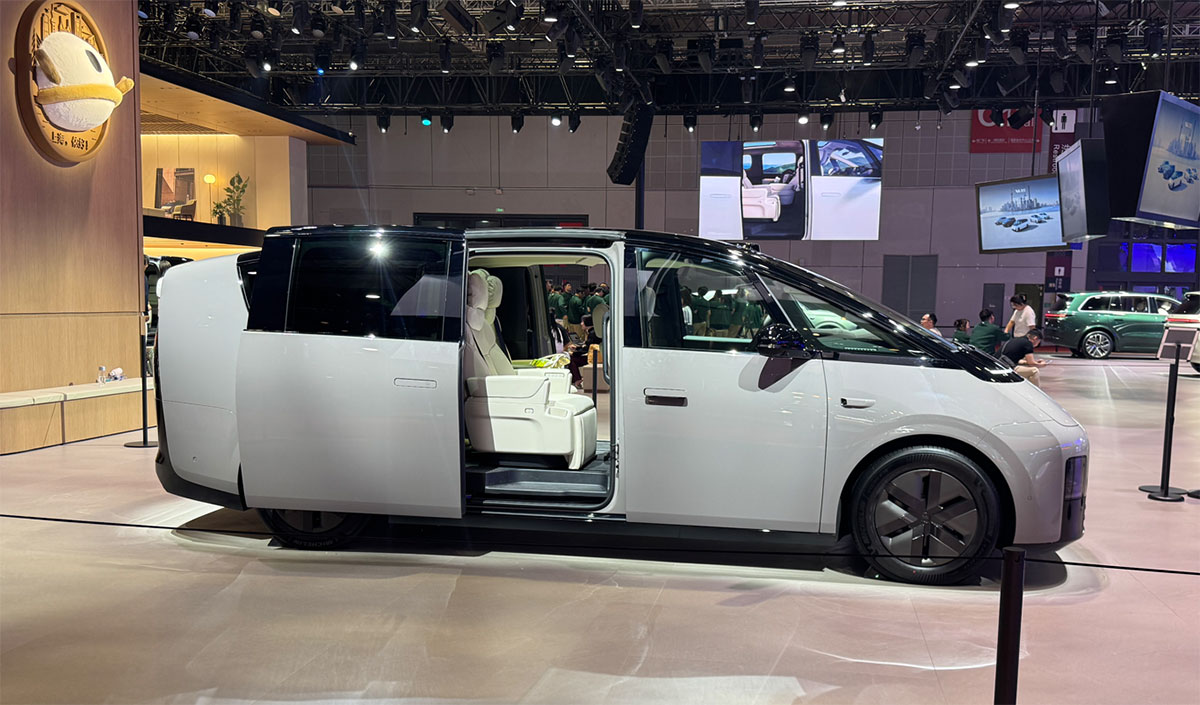Li Auto makes key advance in in-house chip, road tests underway on prototype cars, report says
When running tasks for large language models, one Li Auto M100 chip delivers effective computing power equivalent to two Nvidia Thor-U chips.

- When running tasks for large language models, one Li Auto M100 chip delivers effective computing power equivalent to two Nvidia Thor-U chips.
- The M100 is expected to enter mass production and vehicle integration next year. Until then, Li Auto will continue relying on Nvidia and Horizon Robotics.
Li Auto (NASDAQ: LI) has reportedly achieved a key breakthrough in its in-house developed autonomous driving chip, following domestic peers Nio Inc (NYSE: NIO) and Xpeng (NYSE: XPEV) who have already deployed their chips in mass-produced vehicles.
Li Auto's M100 autonomous driving chip successfully completed prototype production in the first quarter of this year, marking a critical milestone before mass production, according to a report by domestic media outlet LatePost today.
Subsequently, the company completed functional and performance testing of the M100 within two weeks, passing rigorous stress tests conducted by R&D engineers.
Currently, the M100 has been installed in small batches on prototype vehicles for road testing, according to LatePost.
When performing computational tasks involving large language models (LLMs), a single M100 chip delivers effective computing power roughly equivalent to two Nvidia Thor-U chips, the report stated.
For traditional vision tasks involving convolutional neural networks (CNNs), such as image recognition, a single M100 chip delivers computing power equivalent to three Nvidia Thor-U chips.
The M100 is expected to enter mass production and vehicle integration next year. Until then, Li Auto will continue relying on its two existing partners -- Nvidia and China's Horizon Robotics, the report noted.
Currently, major electric vehicle (EV) makers primarily use Nvidia's smart driving chips --including Thor and Orin X -- for mid-to-high-end models, while using chips from domestic manufacturers like Horizon Robotics for entry-level vehicles.
To better align with their proprietary algorithms and coordinate with product release schedules, some domestic EV makers have initiated in-house development of smart driving chips.
Nio launched its chip project in 2021 and unveiled its in-house developed smart driving chip, Shenji NX9031, in December 2023.
The ET9, which began deliveries in late March, is equipped with two Shenji NX9031 smart driving chips. Nio said a single Shenji chip delivers computing power equivalent to four Nvidia Orin X chips combined.
In May, Nio updated its mainstay models -- the ET5, ET5 Touring, ES6, and EC6 -- with one of the key changes being the switch from four Nvidia Orin X chips to a single Shenji NX9031 for autonomous driving.
The third-generation Nio ES8 large SUV, set to be officially launched at the end of next month, has also transitioned to a single Shenji NX9031 chip.
In June, multiple reports indicated Nio was considering spinning off its chip business and introducing strategic investors to pave the way for supplying other automakers.
Xpeng officially launched the G7 SUV on July 3, the first model equipped with its in-house developed Turing AI chip. Yesterday, the company rolled out the next-generation P7 electric sedan, which comes standard with the Turing AI chip.
The G7 Ultra variant and the entire P7 lineup are equipped with three Turing AI chips, delivering over 2,200 TOPS of effective computing power.
Li Auto has budgeted billions of dollars for its in-house chip project. Beyond hardware like NPUs (Neural Processing Units) and SoCs (System on Chip), this includes software development and adaptation, according to LatePost.
The company's CTO, Xie Yan, has been the primary driver behind this integrated hardware-software R&D strategy. Xie previously worked at Intel, Alibaba, and Huawei, the report noted.
Xie aims to maximize the utilization of chip hardware computing power through software scheduling capabilities, thereby outperforming competitors in performance, the report said.
Disclaimer: The views in this article are from the original Creator and do not represent the views or position of Hawk Insight. The content of the article is for reference, communication and learning only, and does not constitute investment advice. If it involves copyright issues, please contact us for deletion.